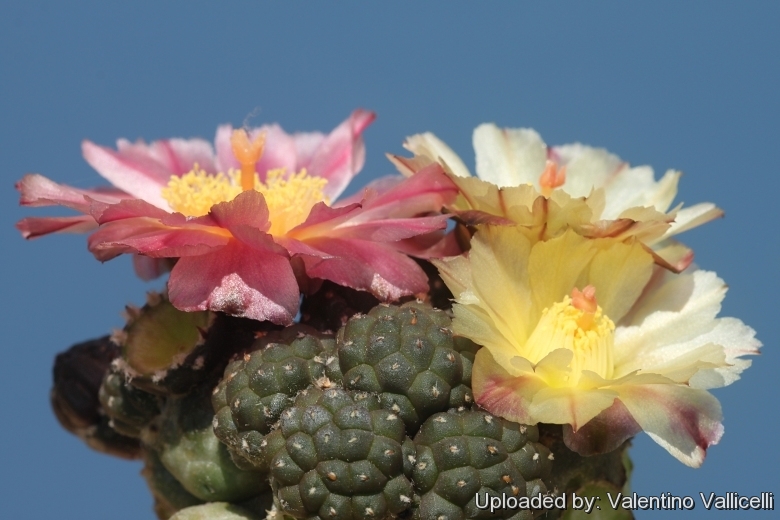
Maihueniopsis bonnieae cv. Inermis Photo by: Valentino Vallicelli
When a flower start opening its petals are a pale honey-yellow, but they darken ageing. On the second day, before fading, the petals take a rich tan-rose colouration. Occasionally yellow and pink flowers occur together.
Origin and Habitat: Garden origin. The natural species comes from a small area in the province of Catamarca (Argentina) at elevations of 2,500 to 3,300 metres above sea level.
Synonyms:
See all synonyms of Maihueniopsis bonnieae
back
Accepted name in llifle Database:Maihueniopsis bonnieae (D.J.Ferguson & R.Kiesling) E.F.AndersonCact. Succ. J. (Los Angeles) 71(6): 325. 1999 [24 Nov 1999]Synonymy: 4
Cultivars
(1):
back
Description: Maihueniopsis bonnieaeSN|1024]]SN|1024]] cv. inermis, best known in cultivation as Puna bonnieaeSN|1023]]SN|1023]] f. inermis, is a lovely spineless form (without spines). In the wild plants have 9 to 20 very short spines, flattened, radiating and slightly bent over the stem and the spineless form is very uncommon. This plant is smooth and harmless. A particularity of Maihueniopsis bonnieaeSN|1024]]SN|1024]] cv. inermis is that the flower are chameleons. When a flower start opening its petals are a pale honey-yellow, but they darken ageing. On the second day, before fading, the petals take a rich tan-rose colouration. Occasionally yellow and pink flowers occur together.
Subspecies, varieties, forms and cultivars of plants belonging to the Maihueniopsis bonnieae group
 Maihueniopsis bonnieae (D.J.Ferguson & R.Kiesling) E.F.Anderson: has small globular stems up to 2.5 cm in diameter with 9-20 radial spines per areole. It has a large turnip root. Distribution: Catamarca, Argentina.
Maihueniopsis bonnieae (D.J.Ferguson & R.Kiesling) E.F.Anderson: has small globular stems up to 2.5 cm in diameter with 9-20 radial spines per areole. It has a large turnip root. Distribution: Catamarca, Argentina. Maihueniopsis bonnieae cv. Inermis: this is a lovely spineless form (without spines).
Maihueniopsis bonnieae cv. Inermis: this is a lovely spineless form (without spines).
Bibliography: Major references and further lectures
1) Edward Anderson “The Cactus family” Timber Press, Incorporated, 2001
2) David R. Hunt “Studies in the Opuntioideae (Cactaceae)” D. Hunt, 2002
3) James Cullen, Sabina G. Knees, H. Suzanne Cubey "The European Garden Flora Flowering Plants: A Manual for the Identification of Plants Cultivated in Europe, Both Out-of-Doors and Under Glass" Cambridge University Press, 11/Aug/2011
4) David R Hunt; Nigel P Taylor; Graham Charles; International Cactaceae Systematics Group. "The New Cactus Lexicon" dh books, 2006
5) Demaio, P., Kiesling, R., Trevisson, M. & Perea, M. 2013. Tephrocactus bonnieae. The IUCN Red List of Threatened Species. Version 2014.3. <www.iucnredlist.org>. Downloaded on 19 May 2015.
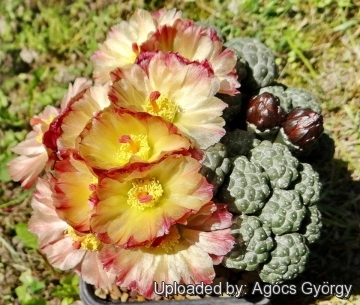 Maihueniopsis bonnieae cv. Inermis Photo by: Agócs György
Maihueniopsis bonnieae cv. Inermis Photo by: Agócs György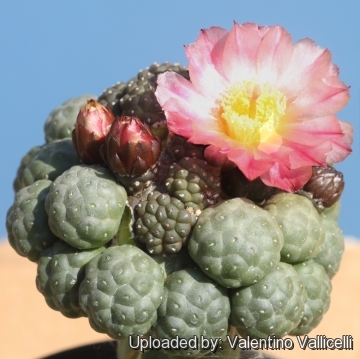 Maihueniopsis bonnieae cv. Inermis Photo by: Valentino Vallicelli
Maihueniopsis bonnieae cv. Inermis Photo by: Valentino Vallicelli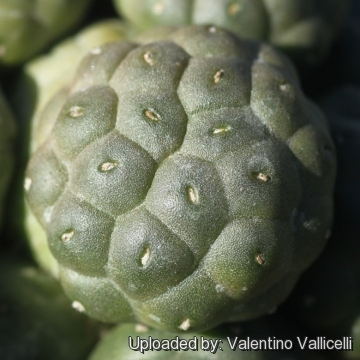 Maihueniopsis bonnieae cv. Inermis Photo by: Valentino Vallicelli
Maihueniopsis bonnieae cv. Inermis Photo by: Valentino Vallicelli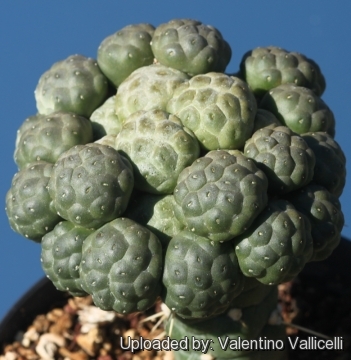 Maihueniopsis bonnieae cv. Inermis Photo by: Valentino Vallicelli
Maihueniopsis bonnieae cv. Inermis Photo by: Valentino Vallicelli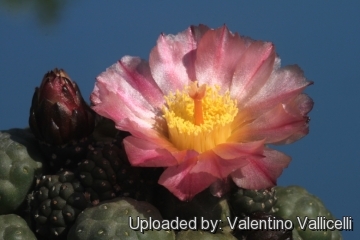 Maihueniopsis bonnieae cv. Inermis Photo by: Valentino Vallicelli
Maihueniopsis bonnieae cv. Inermis Photo by: Valentino Vallicelli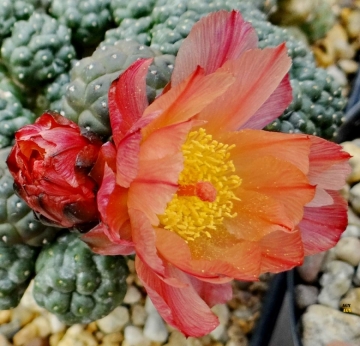 Maihueniopsis bonnieae cv. Inermis Photo by: Agócs György
Maihueniopsis bonnieae cv. Inermis Photo by: Agócs György Flowering habit. Rebutialand - Cactus collection. Photo by: Agócs György
Flowering habit. Rebutialand - Cactus collection. Photo by: Agócs György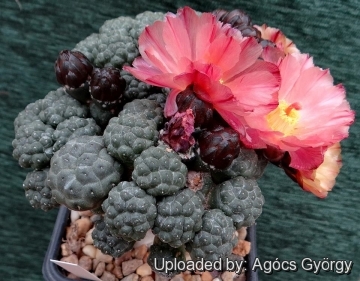 Maihueniopsis bonnieae cv. Inermis Photo by: Agócs György
Maihueniopsis bonnieae cv. Inermis Photo by: Agócs GyörgyCultivation and Propagation: This mountain cactus - because of the elongated fat taproot - necessitate deep pots and a well drained mineral potting mix. They need a sufficient amount of air.
Watering Needs: They are susceptible to overwatering, but need enough water during vegetation.
Frost Tolerance: They tolerate light frost -5 (-10) °C. Need to be kept in a cool place during winter rest this is important for the flowers as well as for their health. Without this cool winter period they normally wont get many buds.
Sun Exposure: Need a good amount of sun.
Propagation: Usually propagated by cuttings and grafting. Grafted plants in culture are most common and sprout strongly. But it is also feasible to root them but they grow much slower on their own roots and takes various years prior to they bloom.


















